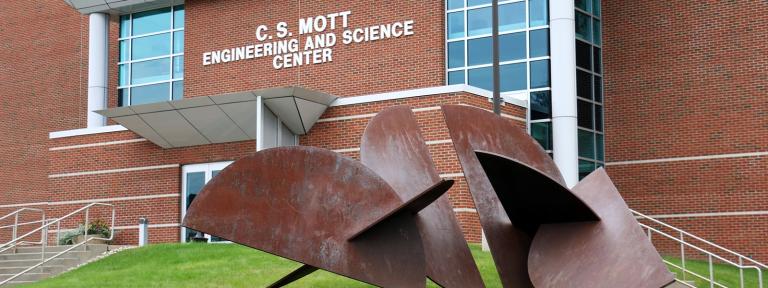
Judson Singer, lecturer in Mechanical Engineering at Kettering, likes to give students in his Engineering Design Communication class real world problems to work on. Always timely, the projects challenge students to research existing technology and project it into the future. The most recent project required students to design a peripheral device for the Segway Human Transporter invented by Dean Kamen. They had to specify the shape, size, color, texture, construction, operation, and materials for a device to be used in conjunction with the Segway transporter that would extend its usefulness.
Working in teams of three to four, his students rose to the challenge and came up with a variety of ideas including attaching a seat, adding an off-road suspension system and developing a removable bracket to hold a laptop computer. Chad Swartz, 19 of Standish, Mich., Josh Rea, 18 of Temperance, Mich., William Mack, 18 of Houston, and Scott Sheridan, 18 of Jackson, Mich., teamed up to integrate a seat with storage compartments for the Segway using space age plastics.
Opting for a more sporting design, Josh Hoeh, 19 of Kaleva, Mich., Stephen Tavalire, 18 of Sterling Heights, Mich., and Jawad Khan, 18 of Riverview, Mich., developed a suspension system that would enable the Segway to be used off-road. "The current suspension has no give," said Hoeh, "the only give is in the tires, which have to be soft to absorb shocks. That effects speed and fuel efficiency." The team designed a progressive suspension system that would stiffen as the terrain got rougher, providing a smoother ride.
Looking at projected uses for the Segway, including use in industrial settings, the team of Josh Belvedere, 19 of Royal Oak, Mich., Jake Hirschman, 18 of Alma, Mich., and Ben Melitz, 18 of Warren, Mich., designed a bracket to hold a laptop computer. "A lot of the proposed uses are for work inside factories and in the National Park Service," said Belvedere, "places where people would need access to computers for information related to the job."
The final part of the project requires each team to "pitch" their project to other engineers, including their classmates and a panel of faculty judges. "Because they are working on similar projects they can't blow smoke at one another," said Singer, "they have to stick to the stats of the Segway and what it realistically can do."